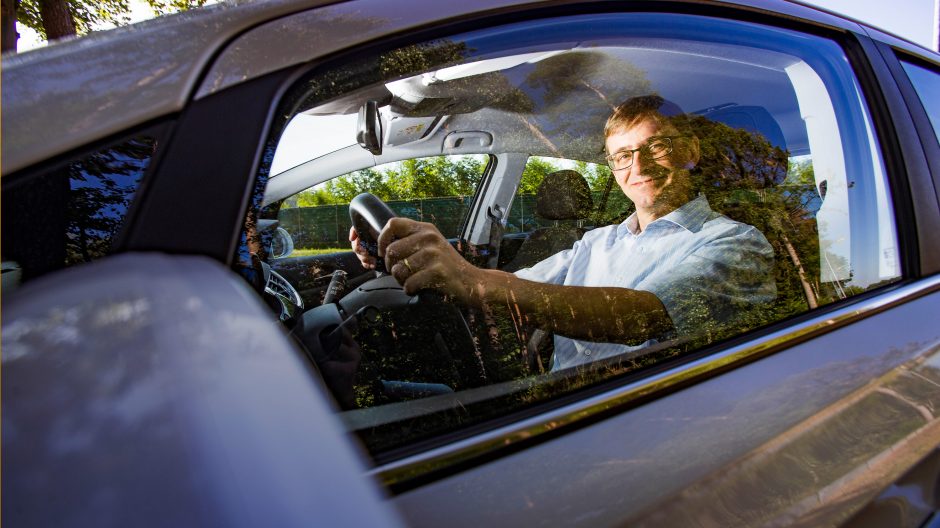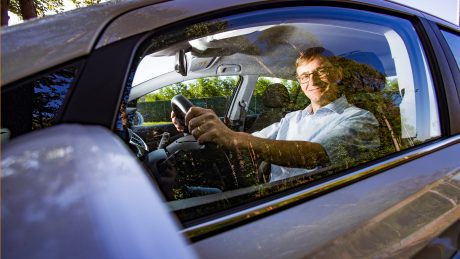Hans-Jörg Thiede travels over 70 kilometers every morning from his home in Zornheim to his desk at the Opel Test Center in Dudenhofen, Germany. To be perfectly honest, getting a lift with him isn’t for adrenaline junkies. The 54-year old hardly ever exceeds 100 km/h, and he pretty much never overtakes anyone, except for trucks going at a snail’s pace. Thiede will take his foot off the gas pedal just a few hundred meters away from an upcoming exit or bend, and simply allow his Corsa to coast on straight stretches of road whenever he can. He hardly ever has to jam on the brakes when he drives like this. His passenger enjoys the comfort of the ride, while discovering the joy of driving at a slower pace.
After all, what’s the point of stressing yourself out by darting in and out of lanes? It’s much more pleasant to simply take your time, take in the landscape, and enjoy the sound produced by the infotainment system. “Once you’ve got used to the less frantic pace, you arrive feeling relaxed, as if you’d taken the train in to work. Other drivers have to make up the time they lose from having to stop in at the gas station more often.”
From profession to hobby
Thiede didn’t opt for this style of conscientious driving simply as a mindfulness technique, however. In a way, this engine specialist has made his job into one of his very favorite hobbies. During the week, he calibrates the engine startup, warm-up, and start/stop function in diesel-equipped vehicles at the Opel Test Center, and in his spare time he does experiments on how economically you can drive the engines that he helped design in everyday life.
He has achieved outstanding results in his Corsa 1.3 CDTI, which he has been driving since 2015. He has already managed to rack up 47,000 kilometers in his little Opel, and uses 3.32 liters per 100 kilometers on average. He even pared this figure down to 3.19 liters on average for the same distance between May 2017 and May 2018. And he’s even succeeded in achieving an average fuel economy of just under three liters four times on a tank of gas – to be more precise, his little Corsa consumed 2.92 liters/100 km during 5,000 kilometers of driving.
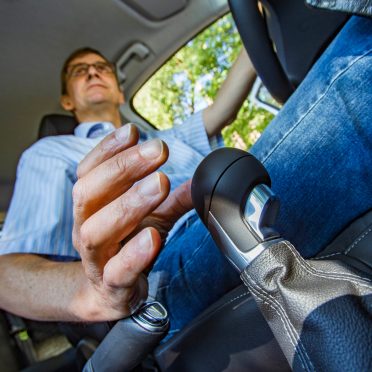
Cruising along the highway: Thiede tries to avoid unnecessary or frequent gear shifts to reduce consumption.
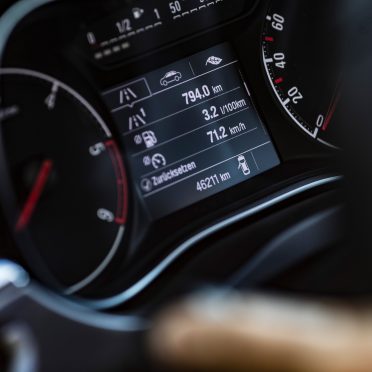
A half-full tank, even after 794 kilometers: Thiede keeps a close watch on his fuel gauge – and fuel consumption – with the help of the onboard computer.
Consumption stats over 12 months:
3.19 liters of diesel consumed per 100 kilometers on average
24,000 kilometers in total covered with 842 euros of fuel
Roughly 1,000 euros saved in comparison to a gasoline-powered model (consumption: 5,4 liters/100 km)
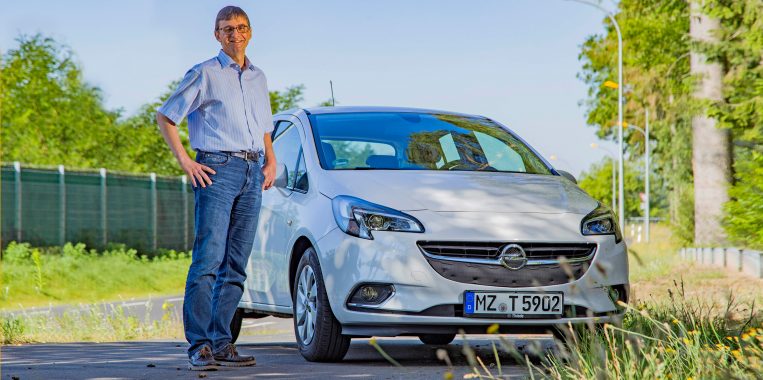
Main positive effects: Thiede’s slower pace of driving saves him money, and he always reaches his destination feeling relaxed.
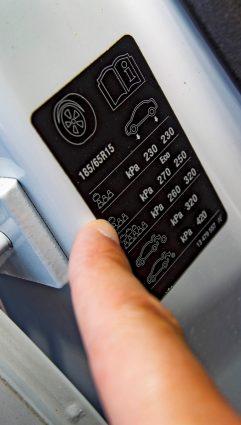
Nothing left to chance: Having the right tire pressure can also help boost fuel economy.
“I spent precisely 842 euros for diesel over these 12 months,” says Thiede. “If you drove a gasoline-powered model that uses 5.4 liters per 100 kilometers – which wouldn’t be a bad number either – you would have to fork out about 1,000 euros more to drive the same distance.”
It’s important to note that he doesn’t just travel on the highways to get to work: Every morning, Thiede has to take the dreaded highway A60, also known as the Mainzer Ring, before passing through the Frankfurter Kreuz highway interchange. Traffic is often stop-and-go, just like in the city. These are by no means ideal conditions for slow driving, and yet he achieves good results all the same.
As someone who likes to go easy on the gas pedal, he regularly posts consumption data on the online platform spritmonitor.de, and loves to compare his numbers with other smart savers. “I’m number one among Opel drivers,” beams Thiede. And even better news: “My Corsa holds second place among 16,354 registered diesel-powered vehicles of all brands – and is not far behind the top-ranking model.”
Better For The Environment – And Your Pocketbook
This compact classic by Opel isn’t just Thiede’s dream car, but the perfect vehicle for every smart saver. “If you factor in motor vehicle tax, my Corsa even has the lowest cost of ownership,” he goes on to say. “Anyone who wants to do something good for the environment and their pocketbook should take a look at last year’s model – you can really get a great deal.”
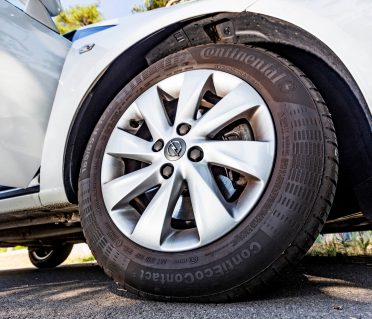
2.7 bar on the front, 2.5 on the back: The 15-inch tires on the Corsa 1.3 CDTI should always have low rolling resistance.
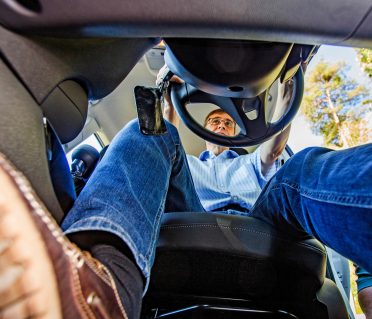
A soft touch with the foot: Hans-Jörg Thiede presses the clutch more often than the gas or brake pedal.
„We make outstandingly good engines“
According to Thiede, the 1.6 liter diesel engine in the Opel Astra, Mokka X, Insignia, and Zafira can also achieve similarly good results. His wife drives an Astra Sports Tourer 1.6 CDTI with 110 hp, and manages on occasion to achieve a fuel economy of 3.5 liters per 100 km. Gas-powered models have made up a lot of ground in recent years, which makes our employees feel that little bit prouder to work at Opel: “We make outstandingly good engines.”
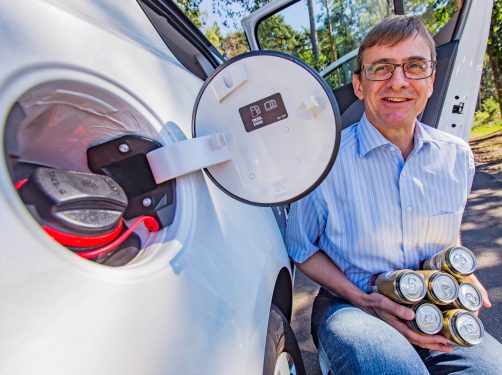
To give perspective: Thiede needs roughly three liters of diesel fuel per 100 km, the equivalent of six large cans of beer – and if the stars are aligned just right, he even manages to eke out 105 kilometers.
July 2018
